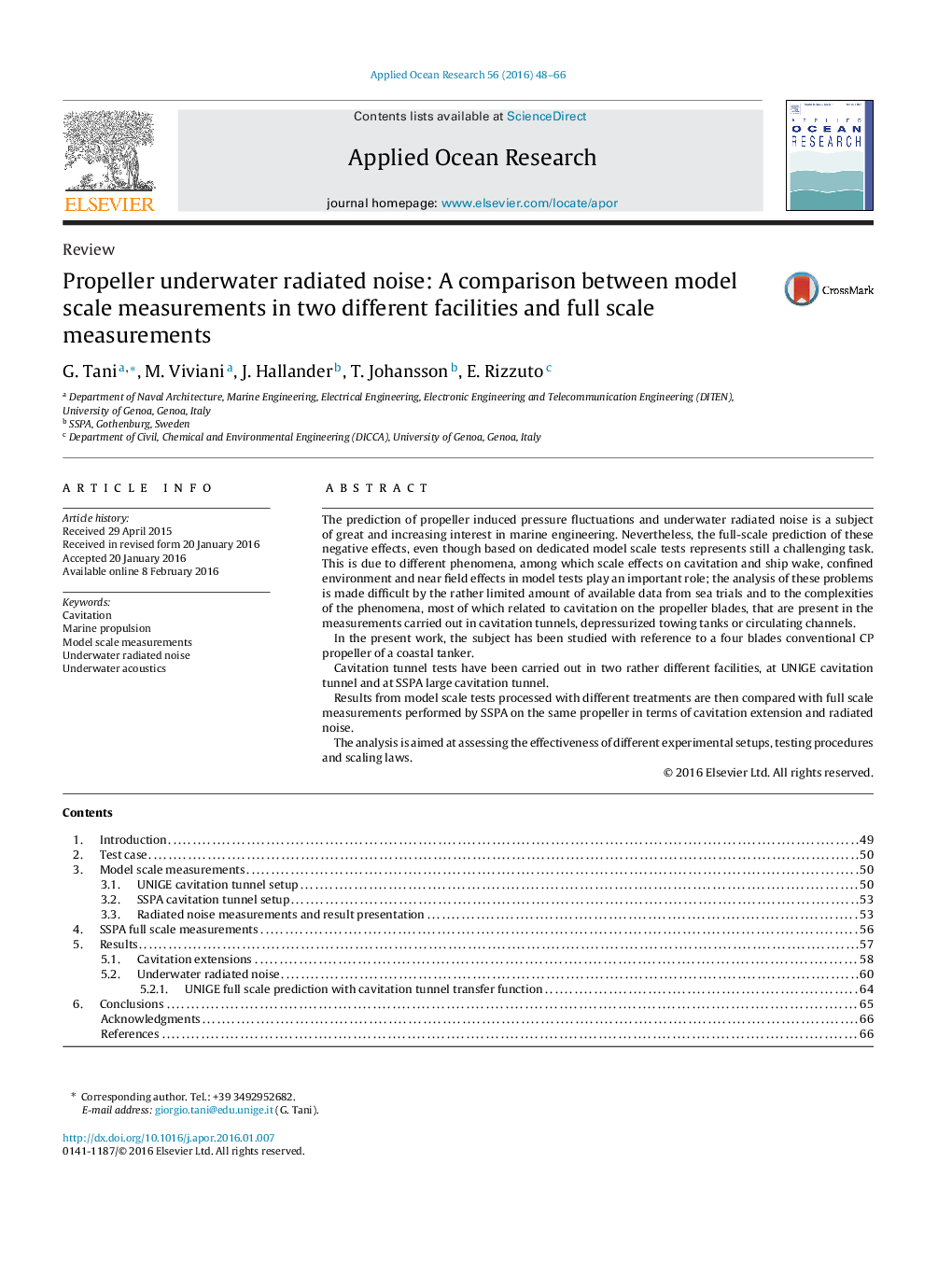| Article ID | Journal | Published Year | Pages | File Type |
|---|---|---|---|---|
| 1719813 | Applied Ocean Research | 2016 | 19 Pages |
•Cavitating propeller radiated noise measurements for a single screw ship is presented.•Model scale measurements are carried out in two very different facilities (size, wake generation).•Different prediction procedures (including confined environment effect) are discussed and used.•Full scale measurements are compared with predictions showing a satisfactory agreement.•The comparison allows to point out advantages and shortcomings of the approaches and future needs.
The prediction of propeller induced pressure fluctuations and underwater radiated noise is a subject of great and increasing interest in marine engineering. Nevertheless, the full-scale prediction of these negative effects, even though based on dedicated model scale tests represents still a challenging task. This is due to different phenomena, among which scale effects on cavitation and ship wake, confined environment and near field effects in model tests play an important role; the analysis of these problems is made difficult by the rather limited amount of available data from sea trials and to the complexities of the phenomena, most of which related to cavitation on the propeller blades, that are present in the measurements carried out in cavitation tunnels, depressurized towing tanks or circulating channels.In the present work, the subject has been studied with reference to a four blades conventional CP propeller of a coastal tanker.Cavitation tunnel tests have been carried out in two rather different facilities, at UNIGE cavitation tunnel and at SSPA large cavitation tunnel.Results from model scale tests processed with different treatments are then compared with full scale measurements performed by SSPA on the same propeller in terms of cavitation extension and radiated noise.The analysis is aimed at assessing the effectiveness of different experimental setups, testing procedures and scaling laws.
